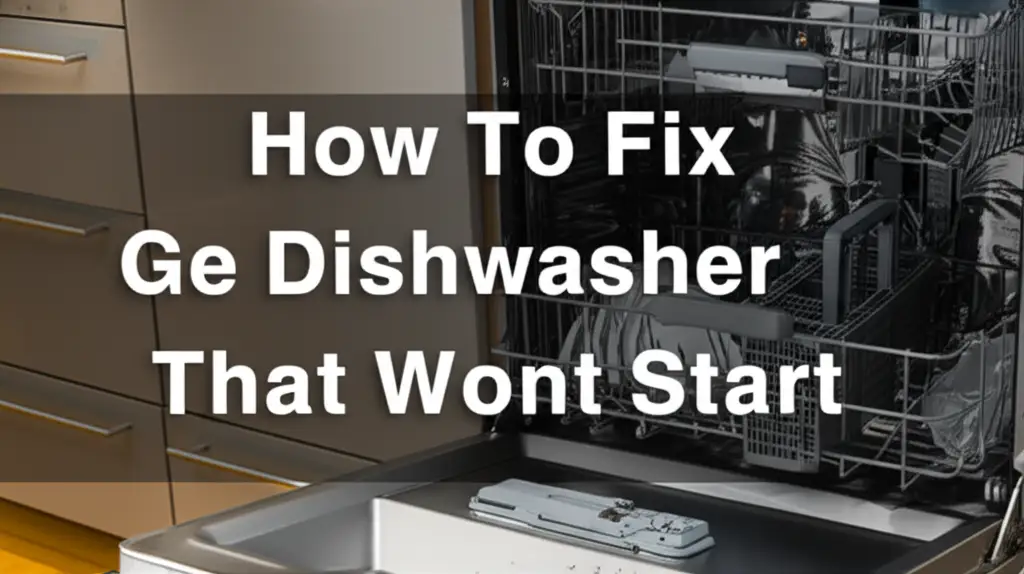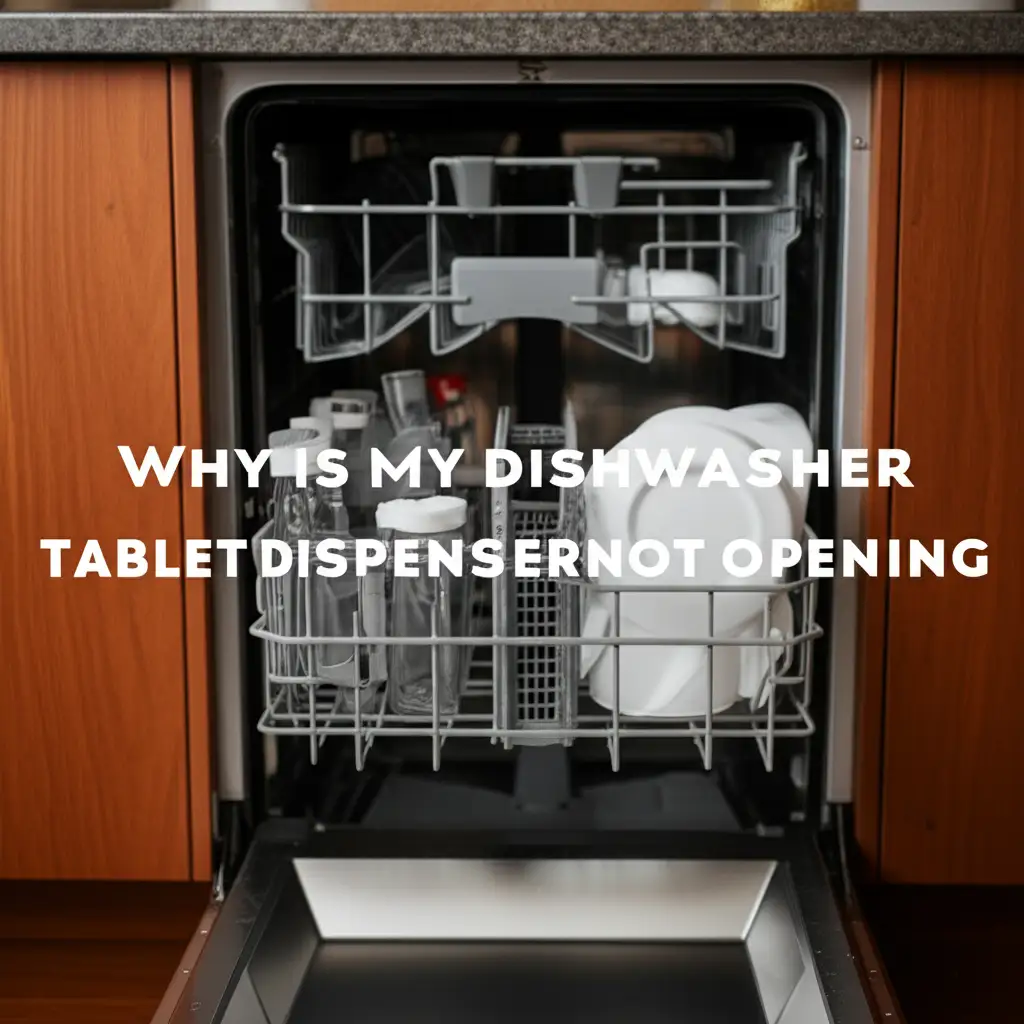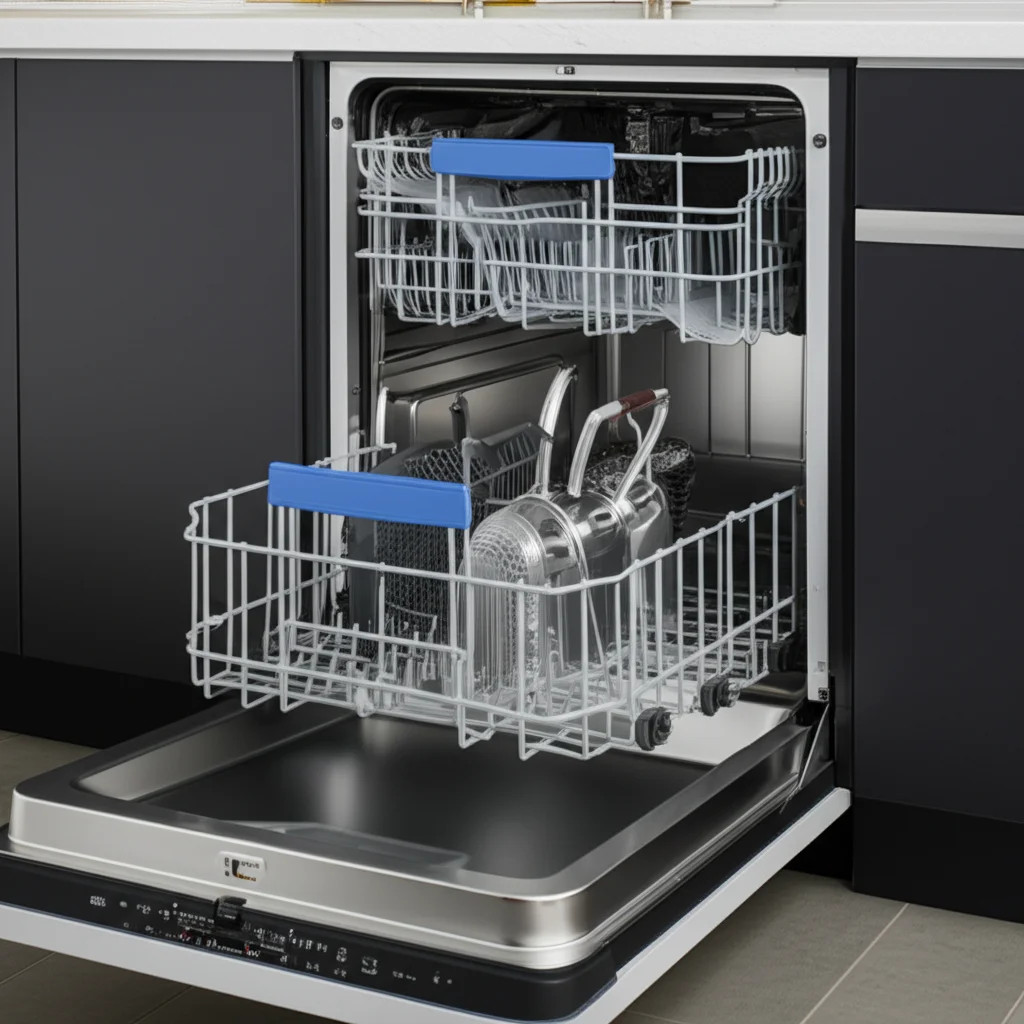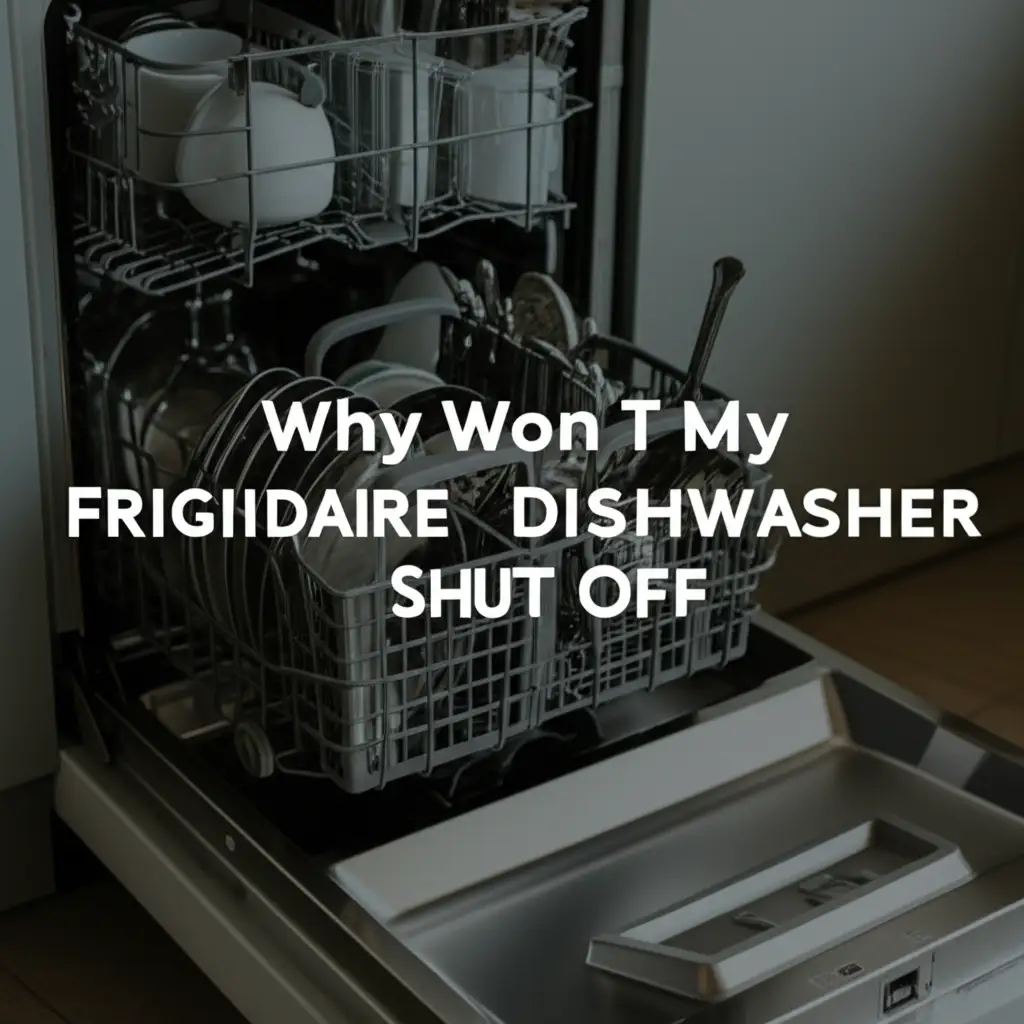· Davia Murnell · Appliance Repair · 20 min read
Why Is My Dishwasher Tablet Not Coming Out Of The Dispenser
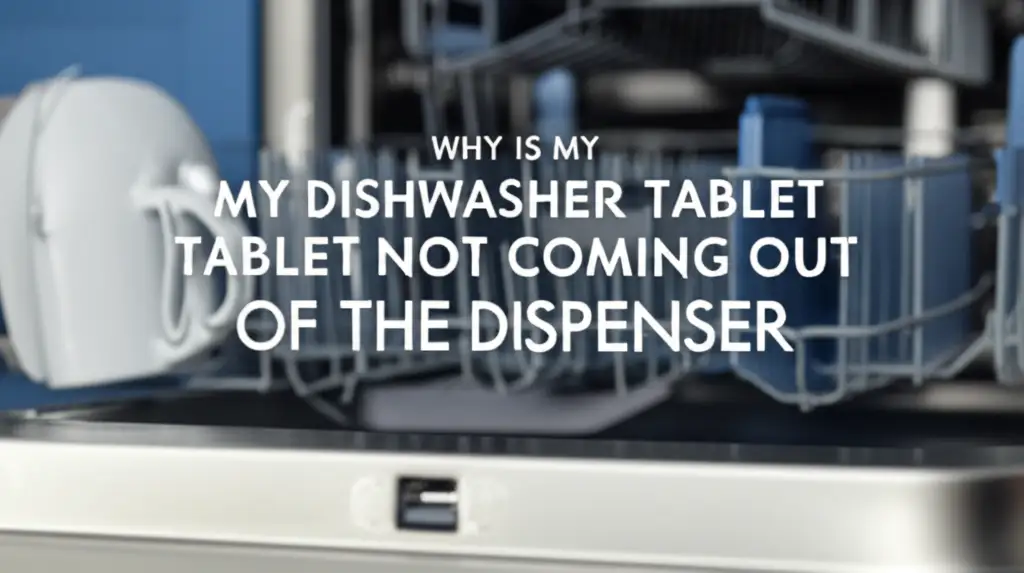
Why Is My Dishwasher Tablet Not Dispensing?
Imagine this: You load your dishwasher, add the detergent tablet, and start the cycle. After the wash, you open the door, expecting sparkling clean dishes, only to find the tablet still sitting in the dispenser. This is a common and frustrating problem. A dishwasher tablet not coming out of the dispenser means your dishes are not getting properly cleaned.
This issue can stem from several causes, from simple loading errors to mechanical failures. Understanding these reasons helps you fix the problem fast. In this guide, I will explain why your dishwasher tablet might be stuck. We will cover common obstructions, water issues, and mechanical problems. You will learn how to troubleshoot and resolve these issues step-by-step. Let’s get your dishwasher working right again.
Takeaway:
- Check for Obstructions: Make sure dishes or silverware are not blocking the dispenser door.
- Inspect the Dispenser: Look for residue buildup or damage inside the dispenser compartment.
- Verify Water Supply: Ensure water pressure and temperature are correct for dissolving the tablet.
- Use Correct Tablets: Always use tablets designed for your dishwasher and store them properly.
- Perform Regular Cleaning: Clean your dishwasher filter and dispenser often to prevent buildup.
Your dishwasher tablet is not coming out of the dispenser because of an obstruction, a dirty dispenser, low water pressure, incorrect dish loading, or a faulty dispenser mechanism. Fixing the problem often involves simple checks and cleaning.
Understanding Common Dispenser Obstructions and Buildup
A primary reason your dishwasher tablet is not coming out of the dispenser is a physical obstruction. This issue prevents the dispenser door from opening fully. When the door cannot open, the tablet remains trapped. I see this problem often in homes.
Sometimes, a large plate or a tall pot sits in front of the dispenser. It acts like a wall, blocking the door. Dishwasher baskets or silverware might also get in the way. Always arrange dishes so they do not block the detergent dispenser. You need a clear path for the dispenser door.
Detergent residue or mineral buildup inside the dispenser can also cause problems. Over time, leftover detergent can become sticky. This sticky residue can gum up the dispenser door. It makes the door hard to open during the wash cycle. Hard water can leave mineral deposits. These deposits can also hinder the dispenser’s movement.
I always recommend checking the dispenser area before starting a wash. Look for any visible blockage from dishes. Then, inspect the dispenser compartment itself. Feel for stickiness or rough buildup. Cleaning this area regularly can prevent these issues. Removing blockages and buildup ensures the tablet releases when it should. A clean dispenser works best. You can learn more about keeping your appliance clean by checking out our guide on how to clean your dishwasher filter. This helps maintain overall performance.
Removing Obstructions and Cleaning the Dispenser
Removing obstructions is usually simple. Open your dishwasher door. Look directly at the detergent dispenser. Identify any dishes that sit too close to it. Move them to a different spot in the rack. Make sure the dispenser door has enough room to swing open.
Cleaning the dispenser requires a bit more effort but is still straightforward. First, empty your dishwasher. Use a damp cloth or sponge to wipe down the inside of the dispenser. Pay close attention to the edges of the door and the latch mechanism. Remove any visible detergent residue. You can use a small brush, like an old toothbrush, to scrub stubborn spots. I find that a little warm water and mild soap work well.
For mineral buildup, a vinegar solution can be effective. Mix equal parts white vinegar and water. Dampen a cloth with this solution and wipe the dispenser. Let it sit for a few minutes to break down the deposits. Then wipe it clean. Rinse the dispenser area with clean water to remove any vinegar smell. This process helps ensure the dispenser door operates smoothly. A clean dispenser is a happy dispenser. Regularly doing this prevents future issues where your dishwasher tablet is not coming out of the dispenser.
Impact of Incorrect Dish Loading on Tablet Dispensing
Proper dish loading is very important for a dishwasher to work correctly. Many people do not realize how much it affects the detergent tablet. If dishes are loaded incorrectly, they can block the dispenser. This is a common reason why your dishwasher tablet is not coming out of the dispenser.
Tall plates or large bowls placed in the lower rack might stand too high. They can directly obstruct the dispenser door. When the door tries to open, it hits these dishes. This prevents the tablet from dropping into the wash water. The spray arms might also struggle to reach all dishes if loaded poorly. This means some dishes do not get clean.
Additionally, overcrowding the dishwasher can cause problems. When too many items are packed in, water circulation is poor. The spray arms need space to spin freely. They need to spray water effectively. If dishes are too close, the water might not reach the dispenser door with enough force to open it or to dissolve the tablet. This can leave dishes dirty and the tablet unused.
I always advise arranging dishes strategically. Place larger items on the sides or back of the lower rack. This keeps the dispenser area clear. Make sure bowls and cups face downwards. Leave space between items for water to circulate. This improves cleaning performance and ensures the detergent tablet releases properly. Think of it as creating an open path for water and the tablet.
How to Load Your Dishwasher Correctly
Loading your dishwasher correctly is a simple habit that prevents many issues. Start by scraping large food particles from your dishes. You do not need to pre-rinse, but removing big bits helps. Place plates in the lower rack. Make sure they face the center of the dishwasher. This directs water spray efficiently. Do not let tall items block the detergent dispenser. Position them away from the dispenser door’s path.
Glasses, cups, and smaller bowls belong in the upper rack. Invert them to prevent water from pooling. Silverware goes into the cutlery basket. Mix forks, spoons, and knives to avoid nesting. This allows water to reach all surfaces. Avoid overlapping dishes. Overlapping creates barriers. Water cannot clean areas covered by another dish.
Ensure nothing blocks the spray arms. These arms spin to spray water. Test them by hand before starting the cycle. They should spin freely. Proper loading helps water circulate throughout the entire tub. It ensures that the dishwasher tablet gets released at the right time. It also helps the tablet dissolve completely. A well-loaded dishwasher cleans better and uses less energy. For more tips on overall usage, you can refer to our guide on how to use your dishwasher.
Water Temperature and Pressure Issues Affecting Dispensing
Water is essential for a dishwasher tablet to dissolve and release. If your dishwasher tablet is not coming out of the dispenser, water problems could be the cause. Specifically, water temperature and pressure play a big role. The detergent tablet needs hot water to dissolve properly. If the water entering your dishwasher is too cold, the tablet will not break down. It might sit in the dispenser, only partially dissolved, or remain intact.
Most dishwashers need water at least 120°F (49°C) to work effectively. If your water heater is set too low, or if the dishwasher fills before the hot water reaches it, you might have cold water issues. This is especially true if your dishwasher is far from your water heater. I recommend running the hot water tap at your kitchen sink for a minute before starting the dishwasher. This brings hot water closer to the appliance.
Low water pressure can also prevent the dispenser from opening correctly. The water spray often helps to force open the dispenser door. If the pressure is weak, the door might not open. Weak pressure also means less water reaches the tablet. This slows or stops dissolution. Your home’s overall water pressure might be low. Or, a clogged water inlet valve on the dishwasher could restrict flow.
Check your water heater settings. Also, inspect the water supply line for kinks or blockages. Ensuring adequate hot water and good pressure is vital for proper detergent dispensing and effective cleaning. A tablet needs the right environment to do its job.
Troubleshooting Water-Related Problems
To troubleshoot water temperature, start by checking your water heater settings. Ensure it is set to at least 120°F (49°C). If it is too low, adjust it and wait for the water to heat up. Next, run the hot water faucet at your kitchen sink. Let it run until the water feels hot. Then, immediately start your dishwasher. This ensures hot water fills the machine from the beginning of the cycle.
For water pressure issues, observe the spray inside your dishwasher during a cycle. Some models allow you to briefly open the door to check this. The water should spray with good force from the spray arms. If the spray is weak, check your home’s main water supply. Ensure the shut-off valve for the dishwasher is fully open. Sometimes, the water inlet hose can be kinked or blocked. Straighten any kinks. You might also need to clean the screen on the water inlet valve. This small filter can collect debris and reduce water flow.
If these steps do not help, the problem might be with the dishwasher’s internal water pump or other components. In such cases, professional help might be needed. However, addressing temperature and pressure issues first often resolves the problem of your dishwasher tablet not coming out of the dispenser. For issues with water flow in other appliances, consider checking our guide on how to clean your water dispenser.
When the Dispenser Mechanism Itself Fails
Sometimes, the problem is not about loading or water. The dispenser mechanism itself can fail. This is a mechanical issue that prevents the door from opening. If your dishwasher tablet is not coming out of the dispenser and you have checked everything else, a faulty dispenser is a likely cause.
Dishwasher detergent dispensers use a spring-loaded door and a latch. A small solenoid or bimetal strip usually controls this latch. When the cycle reaches the detergent release point, a signal activates the solenoid. This pulls back the latch, and the spring pushes the door open. If any part of this system breaks, the door stays shut.
Common failures include a broken spring, a faulty latch, or a bad solenoid. The spring might weaken over time or break completely. If the spring is weak, the door might open slowly or only partially. A broken latch means the door cannot release at all. The solenoid might stop working, meaning it cannot receive the signal to open the door.
You can often inspect the dispenser for visible damage. Look for a broken latch tab or a door that feels loose or stuck. If you press the dispenser door by hand, does it spring open easily? If not, the spring might be an issue. These parts are usually replaceable. However, accessing and replacing them might require some technical skill.
Diagnosing and Repairing a Faulty Dispenser
Diagnosing a faulty dispenser often starts with a visual check. Open the dishwasher door and examine the detergent dispenser. Try to open the dispenser door manually. Does it open with ease? Does it snap shut securely? If it feels sticky or does not move freely, cleaning might solve it. If it feels broken or loose, the internal mechanism is likely the issue.
Listen for a click when the dispenser should open during a cycle. Some people run an empty cycle just to listen. If you hear a click but the door does not open, the latch or spring is likely the problem. If you hear no click, the solenoid or the control board might be at fault. The control board sends the signal to the solenoid.
Repairing a faulty dispenser often means replacing the part. You can usually find replacement dispenser assemblies online or from appliance parts suppliers. The repair process varies by dishwasher model. Generally, you need to remove the inner door panel to access the dispenser. Disconnect wires, unclip the old unit, and install the new one. This task requires turning off power to the dishwasher first. If you are not comfortable with electrical work or disassembling appliances, it is best to call a qualified appliance technician. They can safely replace the part. While this is not specific to detergent, issues with other appliance dispensers can have similar root causes; for example, you can learn about why a GE refrigerator water dispenser is not working.
Choosing the Right Tablet and Placement for Dispensing
The type of dishwasher tablet you use and how you place it matters a lot. If your dishwasher tablet is not coming out of the dispenser, the tablet itself might be the problem. Not all detergent tablets are the same. Their size, shape, and how they dissolve can vary.
Using an oversized tablet is a common mistake. If a tablet is too big for your dispenser compartment, it might get stuck. It cannot fall out even if the door opens. Always check the tablet’s dimensions against your dispenser. Most tablets are designed to fit standard dispensers. However, some “extra large” or “power” tablets might be bulkier.
Storage of your tablets also affects them. Dishwasher tablets are designed to dissolve in water. If they are exposed to moisture or high humidity, they can clump together or swell. A swollen tablet might not fit or slide out of the dispenser properly. Always store your dishwasher tablets in a cool, dry place. Keep them in their original sealed packaging until use.
Placement within the dispenser is also key. Tablets should sit flat in the compartment. Do not try to force a tablet in at an angle. Do not stack multiple tablets unless your dispenser is designed for it. Most dispensers are for one tablet only. A properly sized and stored tablet, placed correctly, is more likely to release and dissolve efficiently. This ensures clean dishes.
Best Practices for Tablet Selection and Use
To ensure your dishwasher tablet dispenses correctly, follow these best practices. First, choose high-quality dishwasher tablets. Different brands offer various options. Some tablets have built-in rinse aid or pre-soak functions. Look for tablets that fit your dispenser size. If you are unsure, measure the dispenser compartment. Compare it to the tablet dimensions. Most standard tablets fit well.
Store your dishwasher tablets in their original packaging. This protects them from moisture and humidity. A sealed container or airtight bin also works well. Avoid leaving tablets exposed on the counter. Humidity can make them sticky or cause them to swell. A swollen tablet will not dispense properly.
Always place only one tablet in the dispenser compartment. Make sure it lies flat. Do not force it into the compartment. It should fit without struggle. If you have a dispenser with a separate pre-wash compartment, you might add a small amount of powdered detergent there. This is rare with tablets. The main tablet goes in the main dispenser.
Finally, consider your water hardness. Some tablets work better in hard water. They contain agents to combat mineral buildup. Using the right tablet for your water type can improve cleaning and dissolution. Following these steps helps ensure your dishwasher tablet releases smoothly. This is key for sparkling dishes. For questions about detergent type, check our guide on can you use dishwasher liquid in a dishwasher.
Dishwasher Malfunctions That Affect Dispensing
Beyond the dispenser itself, other general dishwasher malfunctions can stop a tablet from coming out. These issues often affect the entire wash cycle. If your dishwasher tablet is not coming out of the dispenser, it might be a symptom of a larger problem.
One common issue is insufficient water filling. If the dishwasher does not fill with enough water, the spray arms might not get enough pressure. They might not even spin. Without proper water circulation, the dispenser door might not open. The tablet also needs enough water to dissolve fully. This can be caused by a faulty water inlet valve or a clog in the water line.
A malfunctioning main control board can also be the culprit. The control board is the “brain” of your dishwasher. It sends signals to all components, including the detergent dispenser solenoid. If the control board is faulty, it might not send the signal at the right time. Or, it might not send it at all. This means the dispenser door stays closed. You might notice other irregular behavior from the dishwasher if the control board is failing.
Issues with the heating element can also play a role. While not directly linked to opening the dispenser, a failed heating element means no hot water. As we discussed, hot water is crucial for dissolving the tablet. If the water stays cold, the tablet might release but not dissolve properly. This leaves residue or an intact tablet at the end of the cycle. All these system failures impact the overall washing process.
Diagnosing Broader Dishwasher Issues
Diagnosing broader dishwasher issues requires careful observation. First, check if your dishwasher is filling with water at all. Run a cycle and listen. You should hear water entering the tub. If not, the water inlet valve could be bad. This valve controls water flow into the machine. You might need to replace it.
Next, observe the spray arms. During a wash cycle, they should spin and spray water forcefully. If they do not, check for clogs in the spray arm holes. Also, ensure the motor powering the pump is working. A weak spray can be due to a failing pump or low water pressure. If you suspect an issue with water flow, cleaning the dishwasher filter is a good step. This filter can become clogged and reduce water circulation. Find out how to clean the filter in your dishwasher.
For control board issues, look for other strange behaviors. Does the dishwasher stop mid-cycle? Do cycle lights flash erratically? These are signs of a control board problem. Replacing a control board can be complex. It often requires a professional technician. If your dishes are not getting hot, the heating element might be bad. You can test it with a multimeter. Replacing this also usually requires professional help. Addressing these underlying problems will help fix your dishwasher tablet dispensing issue.
Routine Maintenance to Prevent Dispenser Problems
Preventative maintenance is the best way to keep your dishwasher running smoothly. Regular cleaning and checks help avoid many common problems. This includes stopping your dishwasher tablet from not coming out of the dispenser. I strongly believe a little effort now saves big headaches later.
First, routinely clean the detergent dispenser. Detergent residue and hard water minerals can build up inside. This sticky buildup makes the door difficult to open. Use a damp cloth to wipe out the dispenser after each wash. For deeper cleaning, use a vinegar solution once a month. This dissolves mineral deposits effectively. A clean dispenser is free to open when needed.
Second, regularly clean the dishwasher filter. A clogged filter reduces water circulation. This affects how well water reaches the dispenser. It also impacts overall cleaning performance. Most dishwashers have a removable filter at the bottom of the tub. Check your manual for specific instructions on how to clean it. I recommend cleaning it once a week or every few washes. This simple step keeps water flowing freely. You can learn more about how often to clean it here.
Third, run a maintenance wash cycle. An empty dishwasher with a dishwasher cleaner, or white vinegar, can remove grease and mineral buildup. This cleans internal components, including spray arms and water lines. This ensures proper water flow and temperature. It helps maintain the entire system. Doing this monthly helps prevent many issues, including dispenser problems.
Simple Steps for Ongoing Dishwasher Care
Here are simple steps for ongoing dishwasher care. After each use, wipe down the inside of the door and the gasket. Food particles can get trapped here. This prevents mold and odors. Also, quickly check the detergent dispenser for any leftover residue. Wipe it clean.
Weekly, remove and clean your dishwasher filter. Rinse it under running water. Use a soft brush to scrub away food particles and grease. Make sure to reassemble it correctly. This ensures water flows properly. This also prevents spray arm blockages.
Monthly, perform a deep clean. Place a cup of white vinegar in an upright, top-rack safe bowl. Run a hot water cycle with an empty dishwasher. The vinegar helps remove hard water deposits and odors. Alternatively, use a commercial dishwasher cleaner. This helps clean all internal parts. You can get more information on how to clean your dishwasher with vinegar.
Always use good quality dishwasher detergent. Store tablets properly to prevent them from sticking or swelling. Regularly check your spray arms for clogs. Clear any debris from the holes. Following these simple steps will extend your dishwasher’s life. It will also ensure your detergent tablet always comes out of the dispenser.
FAQ Section
Why did my dishwasher tablet not dissolve fully?
Your dishwasher tablet might not dissolve fully due to insufficient hot water, low water pressure, or a clogged spray arm. The tablet needs hot, forceful water to break down completely. Make sure your water heater is set high enough and your spray arms are clear of debris. Check for proper water flow during the cycle.
Can old or expired dishwasher tablets cause problems?
Yes, old or improperly stored dishwasher tablets can cause problems. Tablets exposed to humidity can clump, swell, or stick together. This makes them difficult to dispense or dissolve. Always store tablets in a cool, dry place in an airtight container. Use them before their expiration date for best results.
What should I do if my dispenser door is stuck shut?
If your dispenser door is stuck shut, first check for physical obstructions like dishes. Then, inspect the dispenser for sticky detergent residue or mineral buildup. Clean the dispenser thoroughly. If it still does not open, the internal mechanism, like the latch or solenoid, might be faulty and require repair or replacement.
Is it okay to just throw the tablet into the bottom of the dishwasher?
While some people do this as a temporary fix, it is not ideal. Throwing the tablet into the bottom can cause it to dissolve too quickly during the pre-wash cycle. This leaves no detergent for the main wash. Also, it might not dissolve evenly. The dispenser ensures the tablet releases at the optimal time for effective cleaning.
How often should I clean my dishwasher dispenser?
You should wipe down your dishwasher dispenser after every few uses to remove fresh residue. For a deeper clean to tackle mineral buildup, I recommend doing it at least once a month. This routine cleaning prevents stickiness and ensures the dispenser door opens smoothly during every cycle.
Why is my dishwasher still dirty even after the tablet releases?
If the tablet releases but dishes are still dirty, the problem might be poor water circulation, clogged spray arms, or a dirty filter. Low water temperature or improper dish loading can also lead to ineffective cleaning. Ensure your dishwasher’s internal components are clean and your dishes are loaded correctly.
Conclusion
Finding your dishwasher tablet still in the dispenser at the end of a cycle is frustrating. It means your dishes are not clean, and your appliance is not working as it should. We have covered the main reasons this happens. These include simple issues like dishes blocking the dispenser or more complex problems like a faulty dispenser mechanism. Understanding these causes empowers you to troubleshoot effectively.
Remember to always check for obstructions from dishes. Keep your detergent dispenser clean from buildup. Ensure your dishwasher gets enough hot water at the correct pressure. Use the right size and type of dishwasher tablet, stored properly. Finally, address any underlying dishwasher malfunctions and practice regular maintenance. By following these steps, you can prevent your dishwasher tablet from not coming out of the dispenser. This ensures sparkling clean dishes after every wash. If you need further assistance with any appliance repair or general home maintenance, feel free to explore our other helpful guides.
- dishwasher repair
- dishwasher problems
- appliance troubleshooting
- dishwasher maintenance
- detergent dispenser
- kitchen tips


